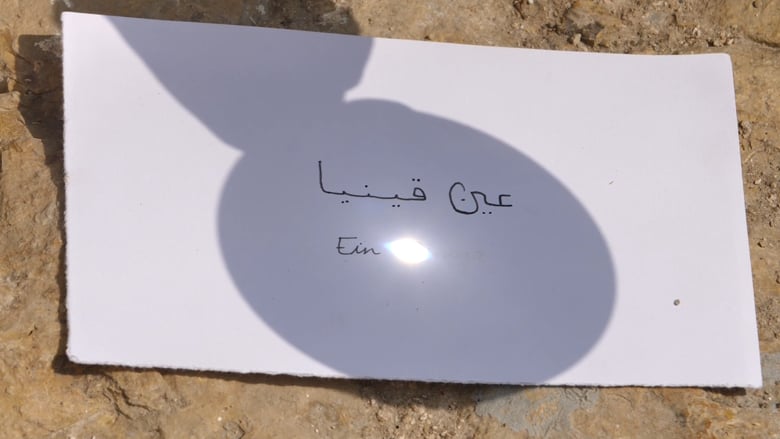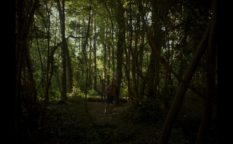Review: The Sun and the Looking Glass (2020)

The trouble with the long titles, especially when accompanied with even longer subtitles, is that they reveal too much of the film’s content. Well, almost the entire content… This is certainly the case with The Sun and the Looking Glass – for one easily forgets but the tree remembers by the Brussels-based multidisciplinary French artist Miléna Desse. The documentary premiered at FID Marseille’s new Flash competition, but it seems like a work of art that belongs more to galleries than to movie theatres, which is not surprising, given the background of the filmmaker.
The Sun and the Looking Glass is a collection of different types of imagery shot in the village of Ein Qiniya in Palestine’s West Bank, occupied by the Israeli forces in 1967 and deserted shortly afterwards. The village itself is usually shot from afar, either on tape (super-8, 35mm) or digitally, but the film’s protagonist, the old qaiqab tree resisting the challenges of time, is shot both ways, from afar and in close-ups through the looking glass. The looking glass also serves as a pen of sorts in the animated sequences of the writing of the contextual info-cards on a board.
Theoretically, The Sun and the Looking Glass is a work of activism and social archeology, dealing with the consequences of the occupation. However, in its multitude of filming approaches and techniques that often seem like being there for their own purpose, it comes across more like a showcase of Desse’s skills and knowledge of assembling different types of footage.
Runtime: 23’ 11’’
Countries: Belgium, Palestine
Language: No dialogue, writings in English
Directed by: Miléna Desse
Written by: Miléna Desse
Cinematography by: Miléna Desse, Mashal Kawasmi
Edited by: Miléna Desse
Sound design by: Sylvie Boutellier
Produced by: Miléna Desse, Mohanad Yaqubi
Production company: Idiom Films
Distribution by: Miléna Desse
















